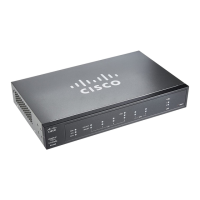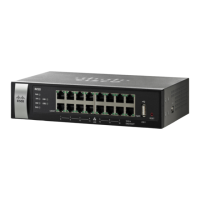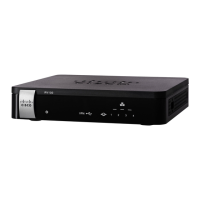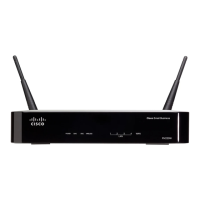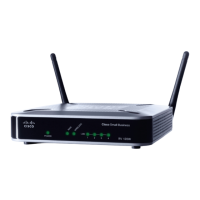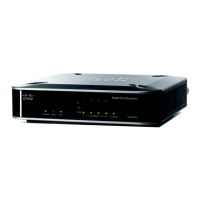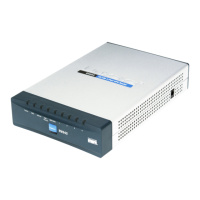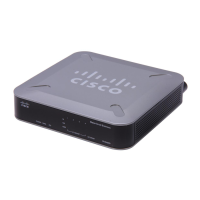USB 2—Type A USB port that supports flash drives and 3G/4G/LTE USB dongles. Caution: Use only the power supply
provided with the device;
using other power supplies may cause the USB dongle to fail.
Kensington Lock Slot – Lock slot on the right side to secure the device physically, using the Kensington lock-down
equipment.
Connecting the Equipment
Connect a configuration terminal (PC) to the device by using a LAN port.
The terminal must be in the same wired subnetwork as the device to perform the initial configuration. As part of the initial
configuration, the device can be configured to allow remote management.
To connect a computer to the device:
STEP 1 Power off all equipment, including the cable or DSL modem, the computer, and this device.
STEP 2 Use an Ethernet cable to connect your cable or DSL modem to the WAN port on this device.
STEP 3 Connect another Ethernet cable from one of the LAN (Ethernet) ports to the Ethernet port on the computer.
STEP 4 Power on the WAN device and wait until the connection is active.
STEP 5 Connect the power adapter to the 12VDC or 54VDC port of the device.
CAUTION
Use only the power adapter that is supplied with the device.
Using a different power adapter could damage the device or cause the USB dongles to fail.
The power switch is on by default. The power light on the front panel is solid green when the power adapter is connected
properly and the device is finished booting.
STEP 6 Plug the other end of the adapter into an electrical outlet. Use the plug (supplied) specific to your country.
STEP 7 Continue with the instructions in the Using the Setup Wizard to configure the device.
Using the Setup Wizard
The Setup Wizard and Device Manager are supported on Microsoft Internet Explorer, Mozilla Firefox, Apple Safari, and
Google Chrome.
To configure the device using the Setup Wizard, follow these steps:
STEP 1 Power on the PC that you connected to the LAN1 port in Step 3 of the Connecting Equipment section. Your PC
becomes a DHCP client of the device and receives an IP address in 192.168.1.xxx range.
STEP 2 Launch a web browser.
STEP 3 In the address bar, enter the default IP address of the device, https://192.168.1.1. A site security certificate
message is displayed. The Cisco RV345/RV345P uses a self-signed security certificate. This message appears because
the device is not known to your computer.
STEP 4 Click Continue to this website to continue. The sign-in page appears.
STEP 5 Enter the username and password. The default username is cisco.
The default password is cisco. Passwords are case-sensitive.
STEP 6 Click Log In. The Router Setup Wizard is launched.
STEP 7 Follow the on-screen instructions to set up your device. The Router Setup Wizard should detect and configure
your connection. If it is unable to do so, it asks you for information about your internet connection. Contact your ISP for
this information.
STEP 8 Change the password as instructed by the Router Setup Wizard or follow the instructions in the Changing the
Administrator Username and Password section. Log in to the device with the new username and password.
NOTE
We recommend that you change the password. You are required to change the password before enabling features such
as remote management.
The Device Manager Getting Started page appears. It displays the most common configuration tasks.
STEP 9 Click one of the tasks listed in the navigation bar to complete the configuration.
STEP10 Save any additional configuration changes and log out of the device manager.
Changing the Administrator Username and Password
To change the Administrator username and password on the device:
STEP 1 From the Getting Started page, select Change Administrator
Password or select System Configuration > User Accounts from the navigation bar.
STEP 2 Check a username from the Local User Membership list and click Edit.
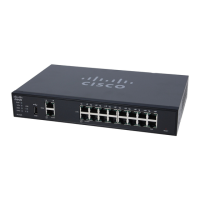
